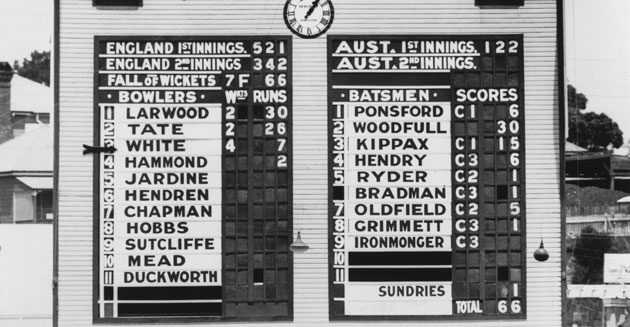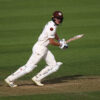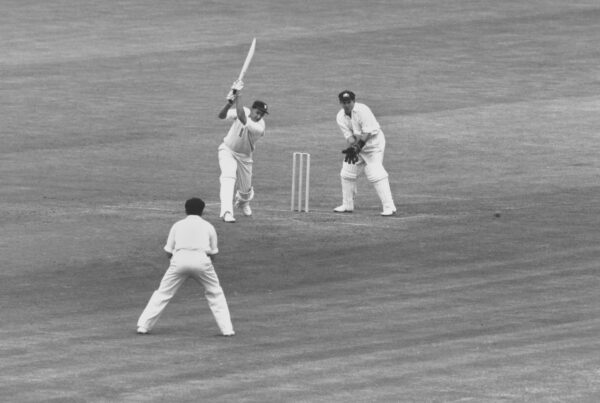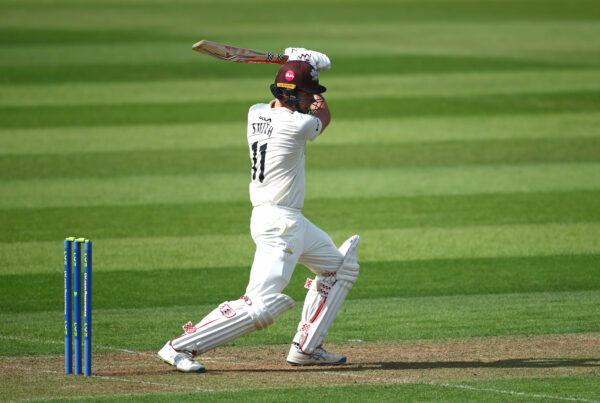If a shiver runs down the backs of England’s Test players when they contemplate the Brisbane Test, it is well deserved.
Just as the Kia Oval is traditionally the home of the final Test in English summers, so Queensland’s capital generally hosts the opener to major series in Australia.
That hasn’t always been the case but the inaugural Test staged in the city saw England launch the defence of the Ashes in 1928-29 with a magnificent win by 675 runs at the Exhibition Ground, Percy Chapman’s side including two Surrey men in Jack Hobbs and Douglas Jardine in a series they went on to win 4-1.
And after the action moved to the Woolloongabba ground – better known as the Gabba – in time for the Bodyline series dominated by implacable Scot Jardine four years later, his side were once again triumphant, their six-wicket victory ensuring the Ashes were retained.
But since then, another 22 visits there have seen England emerge victoriously, one of those in 1978-79 when the hosts were denuded of their best players who were appearing in Kerry Packer’s World Series Cricket.
Bedser’s post-war Brisbane struggles
Surrey men have found the going as hard their fellow tourists. Alec Bedser’s initial taste of cricket’s greatest rivalry came in the first Ashes Test after the Second World War (1946-47). Australia’s 645 all out included centuries by Don Bradman and Lindsay Hassett – Bedser dismissing the latter, having claimed Arthur Morris for his first Test scalp – in delivering 41 overs for his 2-159. England were bowled out for 141 and 172, losing by an innings and 332 runs.
When they returned four years later, Bedser’s 4-45 ensured the hosts were dismissed for 228 only for rain to hit and – with pitches left uncovered – deliver a “sticky” for bowlers to run riot. Freddie Brown declared when England had subsided to 68-7 but Hassett returned the compliment when his men had sunk to 32-7 against Trevor Bailey (4-22) and Bedser (3-9).
That left England needing 193 but despite Len Hutton’s unbeaten 62 they were beaten by 70 runs and Bedser’s county wicketkeeper Arthur McIntyre, playing as an extra batsman, was run out attempting a fourth run.
England went on to lose that series 4-1 but in 1954-55, led by Hutton, they were to triumph 3-1. Yet that was forged in adversity, having been hammered by an innings and 154 runs at the Gabba. Hutton had made the controversial decision to bowl first and Bedser, still regarded as England’s spearhead having led the attack since the war, was still recovering from an attack of shingles.
He could only take 1-131 as the Australians ran up an enormous 601-8dec – dismissing their opponents for 190 and 257 – and Bedser was left out for the rest of the series. He would appear only once more for his country.
May, Lake & Lock flatter to deceive
Peter May was a central figure in that triumph and four years later he led a squad regarded as one of the strongest ever to head down under, regarded as hot favourites to earn England a fourth successive Ashes win. It included Surrey’s spin pair Jim Laker and Tony Lock, the former having destroyed Australia at Old Trafford in !956 by taking 19 wickets – which remains the only time it has been achieved at that level.
Yet May’s men were hammered 4-0 by Richie Benaud’s men and the pattern was set at the Gabba when they were beaten by eight wickets. It was a fourth Surrey player, paceman Peter Loader, who could take more satisfaction than the rest by claiming 4-56 in the first innings.
Edrich’s time
Two high scoring stalemates in the drawn series of 1962-63 and 1965-66, which helped Australia retain the urn throughout that decade, were followed by another when Ray Illingworth led England back there in 1970-71, the home side’s 433 met by a return of 464 of which Surrey left-hander John Edrich top-scored with 79.
England went on to win that series 2-0 and retained the Ashes in 1972 but when they returned for the 1974-75 series they found themselves in the midst of a pace storm. Dennis Lillee had been sidelined for almost two years, forced to undergo what was then experimental back surgery to save his career, while Jeff Thomson’s only previous Test did little to suggest he had a future at that level. Now they came together to form one of the most frightening combinations ever seen and on an uneven Gabba pitch – the Mayor of Brisbane, Clem Jones, had sacked the groundsman and supervised it himself – they left England battered and bruised in winning by 166 runs on the way to regaining the Ashes 4-1.
Edrich, the bravest of men, made 48 in the first innings but during the series remarked to batting partner Keith Fletcher in mid-pitch: “One tour too many,” before returning to his end.
No Surrey players featured in the next two Ashes series down under – England beating the badly depleted hosts 5-1 in 1978-79 but losing 2-1 when they returned four years later, suffering their own losses to a rebel South African tour – but Jack Richards made his debut when the 1986-87 tour was launched at the Gabba. The wicketkeeper made a fourth-ball duck but was to enjoy his moment of glory later on in a 2-1 victory in a series which marked the arrival of Micky Stewart as England’s first team manager.
That was to be the last success the tourists enjoyed for a many years, the next eight Ashes series all bringing heavy defeats.
Butcher, Stewart & Thorpe face a collection of Australian greats
Alec Stewart could take little satisfaction from making his Ashes debut in a 10-wicket defeat in 1990 and was joined in the side four years later, when Graham Thorpe joined him and made 67 in the second innings as England chased 508 but fell short by 184 runs.
Stewart was captain for the 1998-99 battle, Thorpe back too, but it was a third Surrey player who shone brightest when Mark Butcher stroked 116 in the first innings. He added 72 for the fourth wicket with Thorpe (77) which kept down the deficit to 110 after Australia had launched with a total of 485. Set 348 to win, the visitors were saved by a Queensland thunderstorm at 179-6.
Butcher’s liking for the ground was underlined in 2002, making 54 and 40, but it proved a miserable return for England as they were thrashed by 384 runs and Stewart suffered a pair.
No Surrey player appeared at the Gabba in the next two series, Chris Tremlett getting his final Test outing in 2013 and claiming four wickets in a match lost by a mighty 381 runs as England were whitewashed. It was a slightly happier story for Mark Stoneman four years later, making a half-century in the first innings, but the tourists were pummelled once again, this time by 10 wickets.
Rory Burns and Ollie Pope will hope a better start lays ahead.









